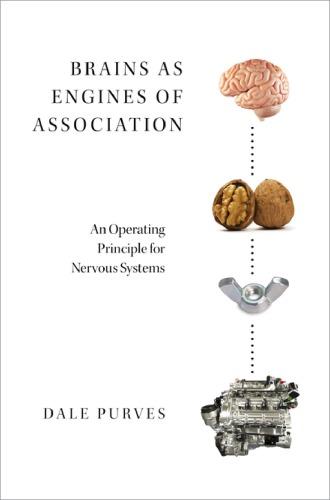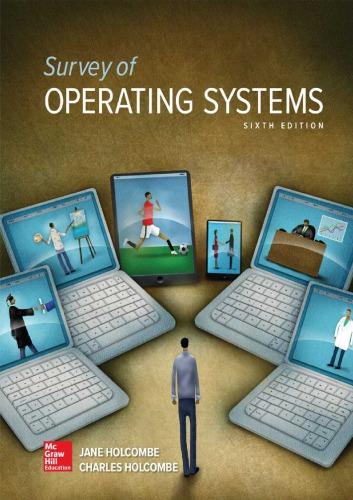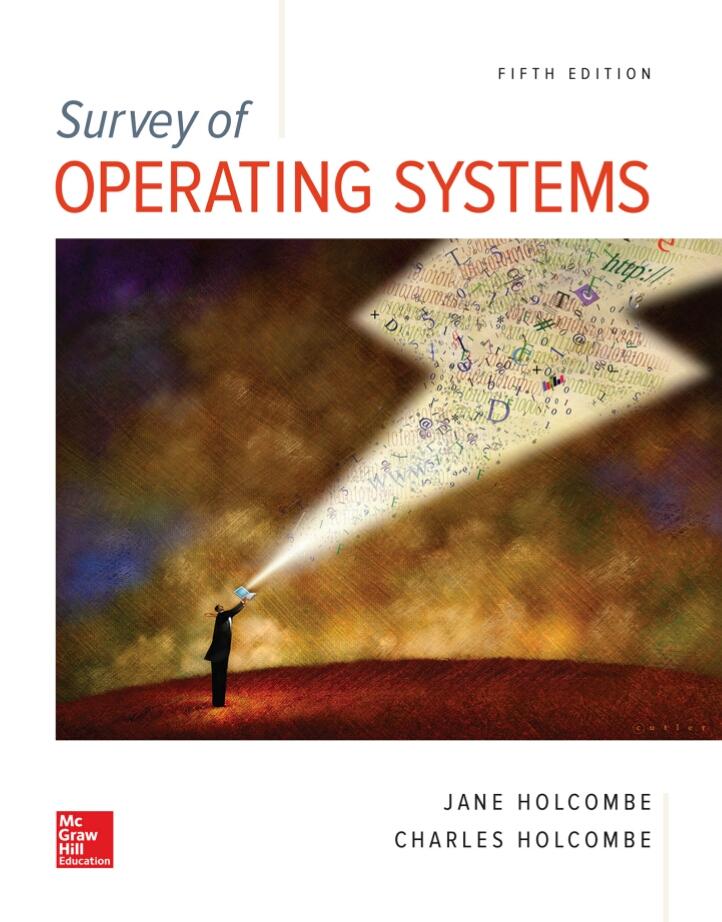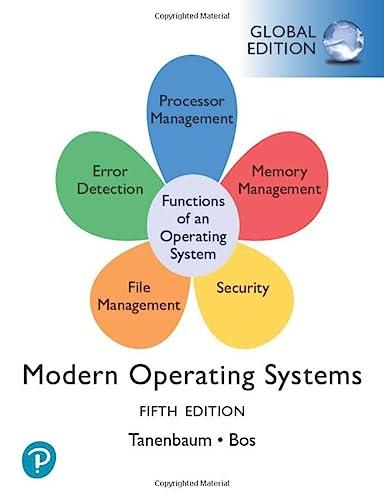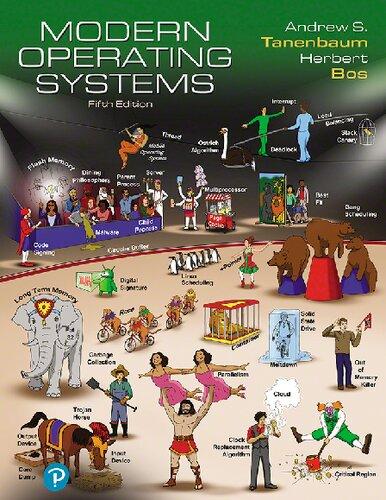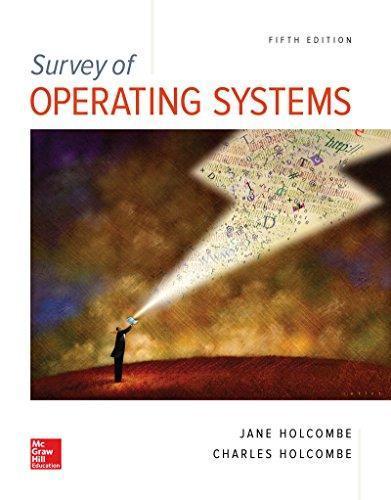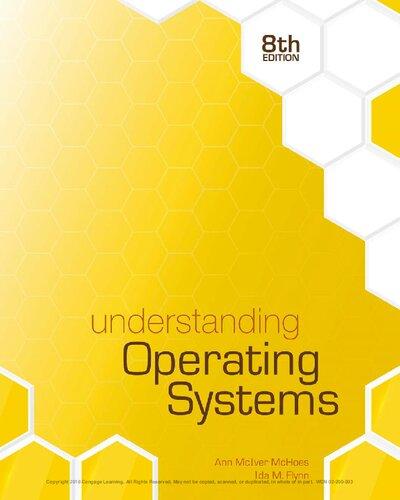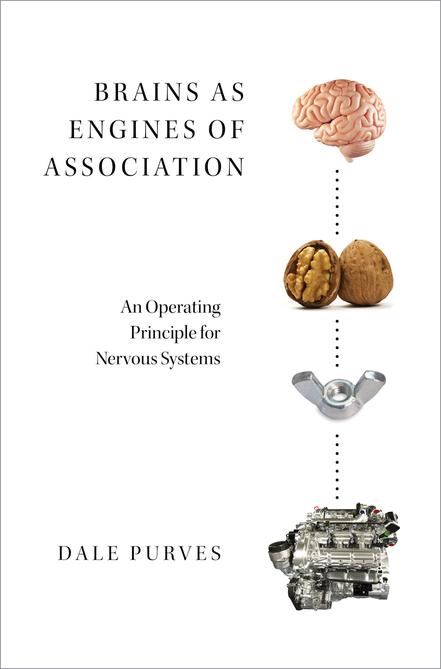1
Oxford University Press is a department of the University of Oxford. It furthers the University’s objective of excellence in research, scholarship, and education by publishing worldwide. Oxford is a registered trade mark of Oxford University Press in the UK and certain other countries.
Published in the United States of America by Oxford University Press 198 Madison Avenue, New York, NY 10016, United States of America.
© Oxford University Press 2019
All rights reserved. No part of this publication may be reproduced, stored in a retrieval system, or transmitted, in any form or by any means, without the prior permission in writing of Oxford University Press, or as expressly permitted by law, by license, or under terms agreed with the appropriate reproduction rights organization. Inquiries concerning reproduction outside the scope of the above should be sent to the Rights Department, Oxford University Press, at the address above.
You must not circulate this work in any other form and you must impose this same condition on any acquirer.
Library of Congress Cataloging-in-Publication Data
Names: Purves, Dale, author.
Title: Brains as engines of association : an operating principle for nervous systems / Dale Purves.
Description: New York, NY : Oxford University Press, [2019] | Includes bibliographical references and index.
Identifiers: LCCN 2018035410 | ISBN 9780190880163
Subjects: LCSH: Brain. | Neurobiology. | Neural circuitry.
Classification: LCC QP356.25 .P86 2019 | DDC 612.8/2—dc23 LC record available at https://lccn.loc.gov/2018035410
9 8 7 6 5 4 3 2 1
Printed by Sheridan Books, Inc., United States of America
CONTENTS
Preface ix
Acknowledgments xiii
PART I } What Nervous Systems Do for Animals
1. Putting the Question in Perspective 3
Introduction 3
Life on Earth 3
Defining Life 5
Energy 6
Evolution 7
Mechanisms 8
Teleology 10
Conclusion 11
Suggested Reading 11
2. Organisms Without Nervous Systems 13
Introduction 13
Bacteria 13
Protists 16
Plants 18
The General Strategy 21
Conclusion 21
Suggested Reading 21
3. Organisms With Nervous Systems 23
Introduction 23
Defining Nervous Systems 23
The Emergence of Nervous Systems 26
The Emergence of Central Nervous Systems 28
What Do Brains Add? 28
Conclusion 33
Suggested Reading 33
PART II } Nervous Systems as Engines of Association
4. The Organization of Nervous Systems 37
Introduction 37
Stimuli 37
Preneural Processing 38
Neural Processing 39
Behavioral Output 43
Neural Systems and Subsystems Are Interactive 45
Conclusion 47
Suggested Reading 47
5. The Problem 48
Introduction 48
Vision as an Example 49
The Basic Challenge 49
An Answer in General Terms 51
Qualia Determined by Empirical Ordering 54
Perceptual Discrepancies 54
Mechanisms 55
Other Modalities 56
Conclusion 57
Suggested Reading 58
6. Neural Associations 59
Introduction 59
Associations Wrought by Evolution 59
Associations Wrought by Lifetime Learning 61
Associations Wrought by Culture 65
Behavioral Categories of Associations 67
Reward 68
Behavioral Responses as Reflexes 69
What Is Associated? 70
Counterarguments 70
Conclusion 71
Suggested Reading 71
PART III } Evidence that Neural Systems Operate Empirically
7. Evidence from Lightness and Color 75
Introduction 75
Luminance and Lightness 75
Analyzing the Occurrence of Luminance Patterns 78
Effects of Other Luminance Patterns 80
Spectral Energy and Color 84
The General Strategy 86
Conclusion 88
Suggested Reading 88
8. Evidence from Geometry 89
Introduction 89
Seeing Intervals 89
Seeing Angles 93
Seeing Object Sizes in Two Dimensions 96
Seeing Object Sizes in Three Dimensions 97
Seeing Stereo Depth 100
Conclusion 103
Suggested Reading 103
9. Evidence from Motion 104
Introduction 104
Apparent Motion 104
The Perception of Speed 106
Implications for the Perception of Time 110
The Perception of Direction 112
Conclusion 115
Suggested Reading 115
10. Evidence from Audition 117
Introduction 117
Sound Signals 117
Sources of Tones 118
Sound Signal Spectra 119
The Problem in Audition 120
An Empirical Approach 122
Evidence from Speech 123
Evidence from Music 127
Implications for Any Sensory System 129
Conclusion 129
Suggested Reading 130
PART IV } Alternative Concepts of Neural Function
11. The Major Options 133
Introduction 133
Neural Function as Feature Detection 133
Neural Function as Statistical Inference 136
Neural Function as Predictive Coding 137
Neural Function as Efficient Coding 138
Neural Function as Computation 140
Conclusion 143
Suggested Reading 143
12. Summing Up 145
Introduction 145
Obstacles and a Way Around Them 145
Empirical Ranking 146
Winning Games 147
Biological and Artificial Intelligence 148
Consequences for Neuroscience 150
The Status of Reasoning 152
Novel Situations 153
Choice 154
Culture 155
Frequency of Stimuli 155
Conclusion 156
Suggested Reading 156
Glossary 159
Bibliography 169
Index 187
PREFACE
This book concerns a question that has bothered me—and no doubt many others— for a long time: What does the human brain and the rest of the nervous system actually do?
Based on subjective experience, the question seems gratuitous: Isn’t the brain the ultimate organizer of our behavior and the seat of the “I” when we think and act? The term “behavior,” however, includes an enormous range of responses to internal and external stimuli, and what “organizing” this welter of reactions means is not at all clear. Likewise, what the “I” might be in this conception of neural function has been debated for centuries without resolution.
If the goal of biology is to understand how living things succeed in the world and the mechanisms they use to do so, then this sort of answer only papers over our ignorance about the function of the nervous system compared to other organs. By middle school, kids have learned that the respiratory system oxygenates the blood, that the digestive system infuses blood with nutrients, that the cardiovascular system conveys oxygen and nutrients to body tissues, and so on. An operating principle of one sort or another has been documented for every major organ system save one: the brain and the rest of nervous system.1 Although textbooks and an overwhelming original literature testify to the wealth of neurobiological information gleaned over the past century or more, a comparable statement about the nervous system will not be found.
This deficiency has led some investigators to imagine that the human brain is so specialized that understanding it will require approaches that have not been needed to fathom the operating principles of other organ systems. The implication is that conventional anatomical and physiological thinking is not up to understanding the human brain, sometimes described as “the most complex object in the known Universe.”2 Some of the disciplines envisioned as coming to the rescue are computer science, mathematics, statistics, network theory, game theory, graph theory, cybernetics, systems engineering, cognitive psychology, physics, quantum physics, philosophy, and “big data” mining. The big data approach (called “connectomics”) rests on the idea that, if all else fails, documenting the connectivity of the estimated
1 The term “brain” is often used as if the rest of the nervous system doesn’t count for much. In fact, there are about as many nerve cells in the spinal cord and peripheral nervous system as there are in the cerebrum, cerebellum, and brainstem (the usual definition of the brain).
2 This truism was recently asserted by Christof Koch, chief scientific officer of the Allen Institute for Brain Science (June 14, 2013, on NPR’s “Science Friday” with Ira Flatow).
86 billion neurons in the human brain should provide the answers sought. Some thinkers have gone so far as to suggest that understanding the human brain may require scientific principles not yet conceived or that the function of the brain is so abstruse that its operation may remain a mystery forever.3 And since interest in the brain runs as deep in the context of human health as it does in basic science, billions of dollars are being poured into neurogenomics, psychotropic drug discovery, and other large-scale efforts aimed at understanding the brain for medical purposes.
In comparison, the thesis here is simple: the operating principle of the brain and the rest of the nervous system is to make and update neuronal connections (associations) between inputs (stimuli) and outputs (behaviors) on a wholly empirical basis. At first blush, this statement must seem pedestrian. Putting associations front and center in thinking about the brain is certainly not new. Both Plato4 and Aristotle5 emphasized the importance of associations in mental life, as have many subsequent philosophers (George Berkeley, Thomas Hobbes, John Locke, David Hume, and Immanuel Kant, to name a few). In psychology, association has also loomed large in the context of classical and operant conditioning for more than a century. And, since the discovery of synapses in the late nineteenth century, neuronal associations based on modulating synaptic connections (“neural plasticity”) have been widely accepted as the basis of learning and memory. The question at hand is not whether neuronal associations are important in neural function: they clearly are. The goal in what follows is to explain why the empirical determination of neuronal connections is inevitable, how useful associations are forged in a physical world we can’t apprehend, and what the consequences are for understanding the behavioral responses elicited by neural inputs.
The core of the argument is that biological sensing systems don’t have the ability to measure the physical characteristics of the objective world in which behaviors must be carried out. Given this quandary, the gist of what follows is that we and every other organism—whether it has a nervous system or not—depend entirely on associations between stimuli and behavior made empirically on the basis of species and lifetime experience. The evolution of nervous systems simply gives members of the Animal Kingdom a wider reach in doing the same things that any biological agent must do to survive and reproduce. If making empirical associations over evolutionary and individual time is indeed the operating principle of nervous systems, then no special assistance from other disciplines, no novel scientific principle, and
3 The linguist Noam Chomsky has been the most notable advocate of this position. See “Science, Mind, and Limits of Understanding.” The Science and Faith Foundation (STOQ), The Vatican, January 2014.
4 Plato (~370 BCE) Phaedrus, trans. by A. Nehamas and P. Woodruff. From Plato: Complete Works, ed. by John M. Cooper. Indianapolis, IN: Hackett.
5 Aristotle (1906) De Memoria et Reminiscentia. G. R. T. Ross, ed. Cambridge: Cambridge University Press.
no investment in schemes for reinventing the brain in silico or knowing the brain’s every synaptic connection are needed.6
Since buying into this idea entails giving up the assumption that brains compute representations of the world—or that they compute anything at all—the argument will be a hard sell. As in any scientific endeavor, the test of a theory is whether it can make sense of phenomena that have been around for a long time but never explained. Oddly, for modern neuroscience, the most salient phenomena that need to be explained are perceptions, one of the end products of nervous systems like ours. Perceptions—what we actually see, hear, feel, taste, smell, etc.—are strange indeed, and, at this point in the trajectory of neuroscience, understanding perceptual phenomenology may be the best way to get at how brains operate. Whatever one’s concept of neural function may be, it must be able to explain what we end up perceiving.
The book is divided into four roughly equal parts. The first part (“What Nervous Systems Do for Animals”) is intended to set the stage for understanding the emergence of neural systems as a particularly effective way to achieve what all organisms must accomplish: survival and reproduction. The second part (“Neural Systems as Engines of Association”) lays out the general argument that biological sensing systems face a daunting problem: they cannot measure the parameters of the world we live in as physical instruments do. As a result, nervous systems must make and update associations (synaptic connections) on the basis of empirical success or failure over both evolutionary and individual time. The third part (“Evidence that Neural Systems Operate Empirically”) reviews evidence accumulated over the past 20 years that supports this interpretation in vision and audition, the sensory systems that have been most studied from this or any other perspective. Finally, the fourth part (“Alternative Concepts of Neural Function”) considers the pros and cons of other interpretations of how brains operate.
Although I have written the book for a broad audience, some readers may find one section or another superficial, while others may find some parts too detailed. I hope not too many will be put off by my failure to always find the middle ground. Obviously, I think that understanding the operating principle of nervous systems is worth thinking hard about, whether or not one agrees with my take on this puzzle.
Dale Purves
Durham, North Carolina 2018
6 This bald statement does not mean that information from other domains is irrelevant. Quite the contrary. For example, an unexpected source of support for a wholly empirical theory of nervous system function has come from recent advances in artificial intelligence (see Chapters 11 and 12).
ACKNOWLEDGMENTS
I am deeply grateful to a host of excellent collaborators over the past 20 years, especially Beau Lotto, for his remarkable imagination and art, and Bill Wojtach, for holding my feet to the fire on a multitude of issues based on his grasp of both neuroscience and philosophy. Special thanks also to Catherine Howe and Zhiyong Yang for insights that I could never have come up. Finally, I am indebted to Henry Greenside for advice about physics, to Larry Inderbitzen for his perspective as a psychiatrist, to Shannon Ravenel and Gordon Smilnak for carefully reading and correcting the manuscript and to Jan Troutt for her fine work on the art.
1 } Putting the Question in Perspective
Introduction
Basic to the question of whether the brain and the rest of the human nervous system have a simple operating principle are some central facts about biology and its relation to neuroscience. What nervous systems do is best appreciated in the context of what all organisms must accomplish in order to survive and prosper, with or without neural assistance.
By definition, biology is the study of life. Whereas physics and chemistry concern laws and principles that govern the behavior of everything in the cosmos, biology is concerned with the subset of entities that live, reproduce, and die. The needed background for considering nervous systems is thus a definition of life, some knowledge about the origins of life on Earth, and what all organisms must do to get along in their niches. Although my understanding of these issues is no more than that of any other student who pays a modicum of attention to the broader sweep of scientific progress, this chapter considers some points of consensus. The aim is to situate the quest for a principle of neural function in the context of biology writ large.
Life on Earth
Contrary to the belief of four of every ten citizens in the United States today, life on Earth has been around for a lot longer than the roughly 6,000 years stipulated in the Bible.1 Based on geological observations, cosmic microwave radiation, radioactive decay, and extrapolation back in time from the rate of cosmic expansion, current estimates are that we are living in a Universe about 13–14 billion years after
1 A Gallup poll in 2014 showed that 42% of US citizens believe that God created humans less than 10,000 years ago, a devastating comment on our educational system and the politics that poor education leads to. The citizens of other developed countries do a lot better.
billion years ago.
its strange origin. Our solar system, however, is a good deal younger. The Sun is an average yellow dwarf star in early middle age, having formed, together with the planets, by condensation from a gaseous cloud of matter about 4.6 billion years ago. The Sun has a remaining lifetime of about 5 billion years before it turns into a red giant star, engulfs the nearest planets (including Earth), and then cools gradually to become a white dwarf and ultimately a black dwarf.2 The Earth is thus about 4.5 billion years old, with something like 5 billion years to go.
As soon as the initially molten surface of the Earth cooled to 100° centigrade, liquid water and organic molecules already present would have made the emergence of life possible, and it didn’t take long for that to happen. Surface cooling to the boiling point of water is estimated to have taken only a few hundred million years, meaning that the conditions for life on Earth were present by about 4 billion years ago.
The oldest evidence for life in the fossil record is in rocks that formed about 3–4 billion years ago (Figure 1.1).3 These organisms were much like today’s cyanobacteria (previously called blue-green “algae”), a phylum of photosynthetic bacteria that remains prevalent.4 Like plants that produce oxygen as “waste,” these organisms began to contribute oxygen to an atmosphere that was initially oxygen-free.
2 Since dwarf stars cool very slowly, their lifetimes are enormously long. Thus, the ultimate fate of the Sun is tied to the as yet unknown fate of the Universe.
3 The recent discovery in Canada of tubular fossils that may have been made by bacteria could extend the age of life on Earth to as much as 4.2 billion years.
4 Six kingdoms of life are generally recognized today: eubacteria (like cyanobacteria and the bacteria in our gut), archaebacteria (found today in deep-sea thermal vents and other extreme niches), protists (single-cell organisms with nuclei), fungi, plants, and animals. The last four are called eukaryotes
FIGURE 1.1 Sedimentary rocks in Western Australia formed by mats of bacteria that lived several
Photograph taken by Paul Harrison (Reading, UK). Stromatolithes dans la réserve naturelle marine de Hamelin.
In terms of the Earth’s history, then, the emergence of life was very early. Of course, life on Earth is unlikely to have been first off the mark or in any way special. Since there are an estimated 100–400 billion stars in our Milky Way Galaxy at various stages of their lifetimes—many with “rocky” planets like ours at a “habitable” distance from their stars—and about 100 billion other galaxies, the implication is clear. The Universe must be teeming with life.
Defining Life
Attempts to define life on Earth have a long and tortured history, beginning in most Western accounts with the opinions of Aristotle on the subject.5 Although local skirmishes over the definition of life continue, most of the major battles have long since been settled. A philosophical battle fought in previous centuries concerned whether life depends on some special quality that transcends the known laws of physics and chemistry. The idea that it does is called “vitalism,” and its major proponents were René Descartes in the seventeenth century, Friedrich Nietzsche in the eighteenth century, and Henri Bergson the late nineteenth and early twentieth centuries. Much like Aristotle before them, the metaphysical thinking of these philosophers was based on a “life force” that permeated animate objects, directing material entities toward a goal, which, for Nietzsche, was a “moral” good. Bergson coined the phrase “élan vital” and saw this force as a necessary complement to the “blindness” of Darwinian natural selection. In scientific circles, this idea was laid low by Hermann von Helmholtz’s demonstration in the 1840s that living tissues (muscle) use energy and produce heat, consistent with the first law of thermodynamics and the physical behavior of everything else in the material world. Nonetheless, the attempt to draw some spiritual or religious significance from life and its trajectory on Earth continued to influence the thinking of many notable biologists. Examples include embryologist Hans Driesch, population geneticist Sewall Wright, geneticist Julian Huxley, and paleo-biologist Pierre Teilhard de Chardin. Most biologists today, however, are at best agnostic on the issue of a goal, moral or otherwise, or indeed any goal at all. The consensus has long been that life depends on chemistry and physics, not an overarching teleology or properties not explainable by the laws that govern all material things.
This widely held opinion notwithstanding, simple definitions of life on a material basis are elusive. Dictionary definitions such as “The quality that distinguishes animate from inanimate objects” are uninformative, and more incisive definitions because their cells have distinct nuclei, whereas the bacterial kingdoms, which do not have nuclei, are called prokaryotes
5 A good historical account is Dyson F (1999). The Origins of Life. New York: Cambridge University Press.
entail a long list of attributes. The chemical and physical properties of life include organic composition; metabolism; and the generation of metabolic waste products such as methane, carbon dioxide, or, in the case of photosynthetic organisms, oxygen. Since these are the simplest signatures of life on Earth, they are the properties that biologists interested in extraterrestrial life are now looking for on Mars, other planets of our solar system or their moons, and planets orbiting other stars. More complex entries on the list are replication, the imposition of local organization (loss of entropy in thermodynamic terms), growth by cell division, and evolution. However, the characteristic of living things most germane to the operational principle of nervous systems is actively seeking out sources of energy.
Energy
Energy is needed to do any kind of work, whether in terms of ordinary conversation or physics. But this statement only says what energy does, not what it is. Physicists— perhaps most famously Richard Feynman in his Messenger Lectures at Cornell in 19646 readily admit that energy remains a concept that is not fully understood. Although energy comes in many forms (e.g., kinetic, electromagnetic, chemical, mechanical, gravitational, and nuclear), it resists being reduced to a “thing.”
If there is a common denominator other than conservation,7 it is that energy is needed for events to occur.8 Without energy, nothing happens. An event can thus be defined as the transfer of energy from one material entity to another at a particular moment in time in a particular place.
It follows that organisms must acquire energy in some form to enable the events that allow them to survive long enough to reproduce. And they (including us) must compete with other organisms to get their fair share of energy in whatever ecological niche they occupy.
Although inanimate objects are passively influenced by energy and change accordingly (think geological change), living things pursue energy sources to obtain nutrients needed for metabolism, growth, reproduction, successful progeny, and, in our own species, surrogates for these basic needs in the form of money, political power, the admiration of others, and so on. Thus, seeking energy is arguably the key property that differentiates living from non-living things.
6 Available on the Internet thanks to Bill Gates who bought the rights. In addition to being one of the great physicists in the twentieth century, Feynman was indisputably its most charismatic, if sometimes opaque, teacher. See Feynman R (2001). The Character of Physical Law (Messenger Lectures, 1964). Cambridge, MA: MIT Press.
7 See The Feynman Lectures on Physics, volume 1, chapter 4, for an extended discussion of energy.
8 One caveat is that, under special circumstances, momentum can be transferred without a transfer in energy and can thus make things happen as well. Another is that all bets are off in the quantum domain.
Evolution
The process by which organisms have come to obtain energy in the widely varied niches they occupy on Earth is evolution. In an article written for school teachers in 1973, the geneticist Theodosius Dobzhansky stated that “Nothing in biology makes sense save in the light of evolution.” This cogent generalization is worth keeping in mind when examining the functions of any organism or organ system. Since evolution—from cyanobacteria to us—gave rise to nervous systems somewhere along the way, it is important to clarify the basic features of this process. Without the changes over time wrought by evolution there would be no nervous systems to worry about.
In 2009, the sesquicentennial of Charles Darwin’s 1859 masterpiece On the Origin of Species by Means of Natural Selection brought forth a wealth of books and articles on the many ways evolution by natural selection has influenced modern biology and human intellection. The opinion of many scientists that The Origin of Species is the most important book ever written seems on target, at least from the perspective of biology. The gist of Darwin’s ideas taught worldwide (with some egregious exceptions) is that organismal variation on Earth can be fully accounted for by natural selection.9
Foremost among other contributors to the evidence for evolution at about the same time was the field biologist Alfred Russel Wallace, whose collecting expeditions in the Amazon and Malaysia were in many ways similar to Darwin’s forays in South America as the “naturalist” on the 5-year voyage of the HMS Beagle.10 Wallace published an account of his expeditions in 1853, and he had read Darwin’s account of his trip in Voyage of the Beagle, published in 1839. But although both men had been thinking about how the variety of species they witnessed came to be, neither was explicit about an underlying mechanism.
In 1854, Wallace embarked on an 8-year expedition to the Malay archipelago that included Singapore, Java, Borneo, and New Guinea, a full account of which he eventually published in 1876 (The Geographical Distribution of Animals). In 1858, however, Wallace wrote a nine-page essay titled “On the Tendency of Varieties to Depart Indefinitely from the Original,” in which he laid out many of the same ideas that Darwin had been thinking about for 20 years but had not yet written up.
9 As many commentators have pointed out, the concept of evolution did not arise de novo with Darwin, who was arguably only an eloquent midwife for ideas that had become prominent if less well formed than his own. By the mid-nineteenth century, educated Europeans were already primed by Darwin’s predecessors in their thinking and writing: Jean-Baptiste Lamarck’s 1809 treatise on evolution; Charles Lyell’s geological evidence for the antiquity of the Earth in Principles of Geology, published in 1830; and Erasmus Darwin’s theory of evolution had already tilled the soil. What differentiated Darwin’s thinking from these forerunners was a mechanism: natural selection.
10 The primary purpose of the voyage that began in 1831 (the ship’s second) was mapping the South American coast. On the ship’s first voyage, Robert Fitzroy, the captain featured in many accounts, took over command of the Beagle after the original captain killed himself in 1828.
Wallace mailed the paper to Darwin from abroad for comment, and it was the receipt of Wallace’s essay that prompted Darwin to quickly compose a précis of his own work. To ensure that both men got credit, Darwin (whose son was fatally ill at the time) arranged to have his friends Charles Lyell and Joseph Hooker present Wallace’s essay along with his own theory to the Linnaean Society in 1858.11 Darwin was puzzled, however, by aspects of the evidence he could not explain. Among these was the problem of adaptation, which, then as now, presents a contentious issue. Adaptation refers to the general idea that evolution is based on “fitness,” enshrined in Herbert Spencer’s phrase “survival of the fittest.” In this view, all changes wrought by natural selection should be adaptive, meaning better suited to reproductive success when compared with other members of a cohort lacking the novel trait in question. But it was obvious to Darwin that there were flagrant exceptions: the tail of the male peacock and the elaborate nest crafted by male bower birds are the usual examples drawn from many others. Darwin argued that such patently nonadaptive phenotypic features and behaviors12 provided an advantage in attracting mates, thus fitting an adaptational perspective by virtue of what he termed “sexual selection.” Sexual selection refers to attraction prior to mating as another factor that promotes reproductive success. The idea was reinvigorated in the 1930s by the quantitative work of the British statistician Ronald Fisher and remains a robust field of evolutionary biology today.
Mechanisms
With respect to a heritable basis for evolution by natural selection, for Darwin and Wallace, genetics lay in the future. Although Darwin and Gregor Mendel were contemporaries, Mendel did not begin his work on pea plants until 1856, and it remained unknown in England until nearly the turn of the century.13,14 As a result, Darwin and Wallace were uninformed about the fundamentals of genetics that are now taken for granted in “neo-Darwinian” theory.
11 Darwin’s rush to publication was made on the basis of Thomas Henry Huxley’s urging. Although Wallace has gotten less credit over the years than he deserved, Darwin was the better writer, clearer thinker, and far better connected socially and scientifically with friends like Huxley, Lyell, and Hooker to promote his ideas. Wallace also made the mistake of exempting human culture and morality from his evolutionary schema, while Darwin went on to publish The Descent of Man in 1871, arguing that humans are just another species in the biological mix. Nonetheless, Darwin seems to have been extraordinarily fair-minded in sharing credit, much more so than most scientists seeking priority on far less important issues.
12 Phenotypes are often thought of as comprising gross anatomical features. They actually include all an organism’s properties, from molecular mechanisms to mentation. Whether some subtle trait is adaptive is rarely a simple story.
13 Bowler PJ (2003). Evolution: The History of an Idea. Berkeley: University of California Press.
14 Conversely, Mendel is said to have read On the Origin of Species in German translation in 1863.
In addition to the rapid growth of “classical genetics” in the early twentieth century, another milestone on the path to understanding the mechanisms underlying evolution was theoretical physicist Erwin Schrödinger’s 1944 book What Is Life? In a volume of less than 100 pages, Schrödinger speculated that evolution’s essential feature must be chemically mediated inheritance conveyed by a code embodied in an aperiodic crystal. He thus anticipated the discovery of the structure of DNA in the early 1950s and the molecular biology that followed. The basis of natural selection, he argued, is “jump-like” heritable changes (mutations) in these molecules, which provided a “working ground” that natural selection then plowed. The more specific concept of genes and their ability to mutate is usually attributed to German physicist Max Delbruck, a major figure in the unfolding molecular genetic revolution.15 Delbruck’s establishment of a summer course on bacterial viruses16 at Cold Spring Harbor Laboratories on Long Island in 1945 brought together many of the founders of molecular biology, Salvador Luria and Alfred Hershey preeminent among them.17
This is not to say that molecular biology holds all the answers to questions about the mechanisms that natural selection relies on to propel evolution. For instance, it is difficult to explain in genetic terms the evolution of altruism, a phenomenon best exemplified by social insects. One doesn’t have to know much about ants, bees, wasps, and termites to recognize the puzzle: many species of these insect families live in colonies with a single queen and a host of sterile workers whose reproductive fitness, in Darwinian terms, is nil. As a result, most members of these species, among the most prevalent on the planet, are not “fit” as individuals, at least not in conventional terms. Darwin, whose initial interest in biology came from collecting beetles, was well aware of this issue, which he regarded as another “special difficulty” for his theory. This particular enigma was resolved by the theory of kin selection proposed by theoretical biologist William Hamilton in 1964. The theory points out that giving up one’s reproductive success can nonetheless be adaptive for the species if the altruist’s genes are more effectively passed on by relatives as a result of self-sacrificing behavior.
An ongoing battle about the mechanism of Darwinian evolution concerns the “target” of natural selection. For the Oxford zoologist and writer Richard Dawkins—who, along with John (“J. B. S.”) Haldane, Peter Medawar, and Steven Jay Gould, is one of the very best popularizers of modern biology—the target is the gene itself, the idea being that organisms are simply vehicles for increasing the
15 As a dedicated reductionist, Delbruck rejected the idea of quantum indeterminacy and seemed at ease with his unsettling conclusion that we are statistically determined machines.
16 Because they depend on the molecular machinery of a host cell to survive and reproduce, viruses are not included among the kingdoms of living things. The viruses studied by Delbruck and colleagues are called bacteriophage viruses.
17 Delbruck, Hershey, and Luria were awarded the Nobel Prize in Physiology or Medicine in 1969 for their work on molecular genetics.
prevalence of particular genes (thus Dawkins’s phrase “the selfish gene”).18,19 In this view, phenotypes, including the “tools” many organisms create (the cocoon of a butterfly, a spider’s web, the stick a monkey uses to extract termites from a rotting log, human instruments), are all ways of giving particular genes an advantage. Despite the ingenuity of this idea, most evolutionary biologists still hew to the Darwinian idea that natural selection can act on any phenotypic feature.
Lest anyone take away from this overview the idea that genetics is now well understood and free from fundamental debates, the articles collected in the book Genetic Explanations: Sense and Nonsense20 are instructive. Among the points made by some of today’s leading geneticists is that no one knows quite how to define a gene, that the links between genotype and phenotype remain deeply uncertain, and that efforts to pin human diseases on specific genotypes is, in most instances, a suspect goal. Nonetheless, evolution and the mechanisms that underlie it are how some organisms eventually came to have nervous systems.
Teleology
Perhaps the most heated question over the decades has been whether the evolution of life by natural selection has a “purpose,” or even a clear direction. The most passionate biologist weighing in on this issue was Stephen Jay Gould who, like most biologists today, answered in the negative. It is obvious that the course of evolution over the past several billion years exemplifies increasing organismal complexity, and, in this limited sense, the evolution of living things has a “direction.” But the tendency toward complexity is presumably the result of organisms occupying ever more niches that demand specialization.21 Gould went on to argue that, despite this apparent direction, the evolution of increasing organismal complexity is blind with respect to any particular phenotype, the increasing complexity of organisms that occupy different niches notwithstanding. That is, if evolution on Earth were to run all over again from day one—or, as Gould put it, if the tape of life could be rewound and restarted—the species extant today might be quite different.22
This idea bears on another argument put forward in the 1970s by Gould and his colleague, Niles Eldredge. They suggested that evolution is not a continuum of small changes, as Darwin supposed, but is actually characterized by long periods
18 The idea of the gene as the target of natural selection stems from papers written in the 1960s by W. D. Hamilton and G. C. Williams.
19 The picture is further complicated by increasing evidence today for naturally occurring hybrids, where two “species” interbreed.
20 Krimsky S, Gruber J (eds) (2013). Genetic Explanations: Sense and Nonsense. Cambridge, MA: Harvard University Press.
21 In our case, nearly the entire nonaqueous surface of the planet at this point in history.
22 Explained in Gould SJ (1989). Wonderful Life: The Burgess Shale and the Nature of History. New York: Norton.
of stasis punctuated by rapid change, an idea for which they found empirical evidence in the fossil record of invertebrates. Although basically a refinement of neoDarwinian theory (i.e., the rate of evolutionary change is clearly variable, and the data are always confounded by gaps in fossil record), the idea that evolution proceeds as a “punctuated equilibrium” continues to engender persistent (and often acrimonious) debate.23
It seems likely that this and other ongoing arguments will soon enough be informed by the discovery of life on other planets or their moons in our solar system and beyond.
Conclusion
The issues discussed here supply a patently superficial account of the history of life on Earth. They nonetheless provide a foundation for asking what brains—or, more properly, what nervous systems—add to this general account of biology.
Suggested Reading
Bowler PJ (2003). Evolution: The History of an Idea. Berkeley: University of California Press. Darwin C (1859). On the Origin of Species by Means of Natural Selection, or the Preservation of Favoured Races in the Struggle for Life (1st edition). London: John Murray.
Darwin C (1868). The Variation of Animals and Plants Under Domestication. London: John Murray.
Darwin C (1871). The Descent of Man, and Selection in Relation to Sex (1st edition). London: John Murray.
Darwin C (1872). The Origin of Species by Means of Natural Selection, or the Preservation of Favoured Races in the Struggle for Life (6th edition). London: John Murray.
Darwin C, Wallace AR (1858). On the Tendency of Species to form Varieties; and on the Perpetuation of Varieties and Species by Natural Means of Selection. J Proc Linnaean Soc London Zool 3:46–50.
Dawkins R (1976). The Selfish Gene. Oxford: Oxford University Press.
Dawkins R (1986). The Blind Watchmaker. New York: WW Norton.
Dyson F (1999). The Origins of Life New York: Cambridge University Press.
Feynman R (2001). The Character of Physical Law (Messenger Lectures, 1964). Cambridge, MA: MIT Press.
Gould SJ (1977). Ever Since Darwin. New York: WW Norton.
23 A recent finding that undermines the idea of punctuated equilibrium as a general rule is that the bacterium Escherichia coli goes on making small improvements over the course of 60,000 generations in the same environment. Thus, what appears to be a period of stasis may be only a slowing of continual change (Lenski R et al. [2015]. Sustained fitness gains and variability in fitness trajectories in the longterm evolution experiment with Escherichia coli. Proc Roy Soc B 282:2015–2292).
Gould SJ (1989). Wonderful Life: The Burgess Shale and the Nature of History. New York: W.W. Norton.
Gould SJ (2002). The Structure of Evolutionary Theory. Cambridge, MA: Belknap Press. Krimsky S, Gruber J (eds.) (2013). Genetic Explanations: Sense and Nonsense. Cambridge, MA: Harvard University Press.
Rosenblueth A, Wiener N, Bigelow J (1943). Behavior, purpose and teleology. Phil Sci 10:18–24.
Simon HA (1962). The architecture of complexity. Proc Am Phil Soc 106:467–482.
Tasker E (2017). The Planet Factory: Exoplanets and the Search for a Second Earth. New York: Bloomsbury Sigma.
Tattersall I (2012). Masters of the Planet: The Search for Human Origins. New York: St. Martin’s-Griffin.
Tyson, N (2017). Astrophysics for People in a Hurry. New York: WW Norton.
Wallace AR (1869). The Malay Archipelago. New York: Harper.
Wallace AR (1870). Contributions to the Theory of Natural Selection (2nd edition). New York: Macmillan.
Wallace AR (1876). The Geographical Distribution of Animals. New York: Harper.
2 } Organisms Without Nervous Systems
Introduction
According to current estimates, the kingdoms of life on Earth comprise at least 8.7 million eukaryotic species (protists, fungi, plants, and animals) and many more prokaryotic species (eubacteria and archaebacteria).1 The fuzziness of these numbers is understandable: new species are being discovered daily and extant species are going extinct, as they always have. Moreover, the concept of a species is not straightforward. The textbook definition of a biological species is a reproductively isolated population of organisms that breed. While these criteria are a fine way to differentiate dogs from cats, they break down for bacteria and other organisms that multiply by cell division and for organisms that exchange genetic material,2 as well as for plant and animal hybrids. Whatever the number may actually be, the overwhelming majority of past and present species don’t have nervous systems. Thus, before asking what function or functions nervous systems add to animal biology, an obvious question is how organisms without them get along so well.
Bacteria
As mentioned in Chapter 1, the two bacterial kingdoms (eubacteria and archaebacteria) are large, enormously successful forms of life and were the first to appear on Earth. Like all organisms, bacteria seek out energy sources to make biological events happen, the most important of these being survival and reproduction. Depending on the species, the energy sought can be in the form of light, heat, or
1 Organismal groupings and numbers are in constant revision, and the delineations here are only general. For more detail see Whittaker (1969), May (1997), and Mora et al. (2011) in the list of suggested readings at the end of the chapter.
2 The definition of species among bacteria is especially complicated because many varieties transfer genetic material in a process called conjugation.
chemical reactions. By using the rules of plant and animal metabolism in sometimes remarkable ways, bacteria have come to occupy most of the ecological niches that the Earth provides, including some very forbidding ones.3 Chemolithotrophic bacteria, for instance, populate deep sea trenches that admit no light and generate extremes of heat, pressure, and terrestrial chemistry. Such organisms acquire energy by the oxidation of inorganic minerals and other compounds that act as electron donors.4 Other bacteria thrive many kilometers underground and derive energy from the heat produced by radioactivity.5 Still other bacterial species are found in niches of extreme acidity, alkalinity, and salinity, leaving hardly any locale without some form of life.
This diversity notwithstanding, bacteria, like all other organisms, need some way of getting information about energy sources from the environment via sensors and some means of responding to that information by movement or other behaviors.6 How, then, do bacteria accomplish these feats without a nervous system or relatively little else in the way of supramolecular machinery?
Given their role in human diseases as well as those of other animals, many bacterial species have been studied intensively, a standard choice being the common gut bacterium Escherichia coli 7 (Figure 2.1). The organism’s most obvious behavior is movement generated by a flagellar bundle at one end of the rod-shaped cell. In response to local gradients of relevant chemicals (amino acids, sugars, oxygen, carbon dioxide)8 the flagellar bundle rotates clockwise, moving the bacterium in some direction. Periods of such swimming (called “runs” that last about a second) are interspersed with intervals of “tumbling” when the flagellar bundle rotates counterclockwise and becomes untangled, leaving the bacterium wandering more or less aimlessly. Its overall progress in a given direction (up a nutrient gradient, for example) is determined by the ratio of runs to tumbles.
To swim up rewarding gradients and down harmful ones, bacteria depend on surface sensors that detect concentrations of nutrient molecules or potentially toxic
3 See Forterre P (2016). Microbes from Hell. (transl TL Fagan). Chicago: University of Chicago Press.
4 Some animals, even large ones such the worms and other bizarre species that live near deep sea thermal vents, are also chemolithotrophs.
5 Li-Hung L et al. (2006). Long-term sustainability of a high-energy, low-diversity crustal biome. Science 314:479–482. doi: 10.1126/science.1127376.
6 “Behavior” is an especially tricky word. Although often used as a synonym for motor responses, behavior includes any response to a stimulus. The responses are diverse even in nominally simple organisms like bacteria. In humans and many other animals, responses to stimuli include perception, attention, emotion, memory, thinking, and homeostasis among others.
7 E. coli is a species in the genus Escherichia, in the family Enterobacteria, in the order Enterobacterias, in the class Gammaproteobacteria, in the phylum Proteobacteria, in the kingdom Bacteria. Like it or not, this is the way biologists describe the taxonomic status of any organism or group of organisms, including us.
8 E. coli is a facultative anaerobe, meaning it can switch back and forth between oxidative metabolism and anaerobic metabolism (i.e., fermentation) depending on the local environment.
Cell wall
Cytoplasmic membrane
FIGURE 2.1 Diagram of an Escherichia coli bacterium. In addition to cytoplasmic organelles such as ribosomes that are responsible for protein synthesis in all cells, bacteria contain a single chromosome that forms a closed loop called the nucleoid (like all prokaryotes, bacteria have no nucleus, the defining feature of eukaryotic organisms). A rotating flagellar bundle generates motor responses to stimuli transduced by molecular receptors in the cytoplasmic membrane. Other extensions called pili are used for conjugation, a process in which two bacteria join and exchange small numbers of genes in plasmids (not shown), as opposed to the full replication of the genome that occurs during bacterial cell division.
molecules such as antibiotics, hydrogen ions (acidity), hydroxyl ions (alkalinity), and many other chemicals. Depending on the species, bacteria can also respond to heat, light, mechanical forces, and attack by viruses (the bacteriophage viruses mentioned in Chapter 1). Most is known about chemical sensors, which are proteins that extend into the environment from the bacterial cell membrane. Determining the links between sensory inputs and effector outputs, such as rotation of the flagellar bundle, is another field of microbial study that has identified a range of intracellular signaling pathways that are generally similar to (and not much less complex
Pili
Capsule
Cytoplasm
Flagellar bundle
Ribosomes
Nucleoid
